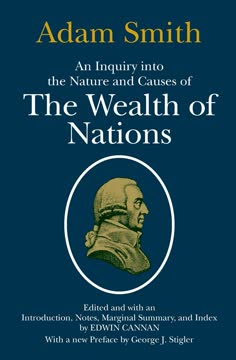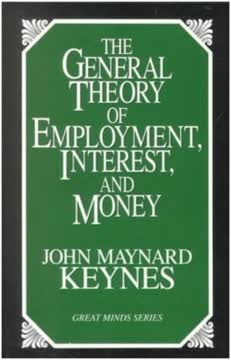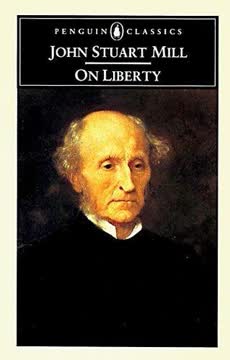Key Takeaways
1. The Division of Labor Dramatically Increases Productivity
The greatest improvement in the productive powers of labour, and the greater part of the skill, dexterity, and judgment with which it is anywhere directed, seem to have been the effects of the division of labour.
Productivity Through Specialization. The division of labor transforms economic production by breaking complex tasks into simple, specialized operations. This approach dramatically increases efficiency and output by allowing workers to become experts in specific tasks.
Pin-Making Example. Smith illustrates this concept through a detailed analysis of pin manufacturing. Without division of labor, a single worker might produce barely one pin per day. However, when the process is broken down into specialized tasks like wire drawing, straightening, cutting, and heading, ten workers can produce 48,000 pins daily - a nearly 50,000% increase in productivity.
Key Mechanisms of Division of Labor:
- Increased worker dexterity through repeated task performance
- Reduction in time lost switching between different types of work
- Development of specialized tools and machinery
- Enhanced skill development through focused practice
2. Markets and Exchange Enable Specialization and Wealth Creation
Every man is rich or poor according to the degree in which he can afford to enjoy the necessaries, conveniences, and amusements of human life.
Economic Interdependence. Markets enable individuals to exchange their specialized production, allowing people to obtain goods and services beyond their personal capabilities. This system of mutual exchange creates wealth by enabling each person to focus on their most productive activities.
Exchange Principles. The ability to trade transforms individual labor into collective prosperity. People are motivated to produce not just for their own consumption, but to exchange surplus with others, creating a complex web of economic relationships that increases overall societal wealth.
Market Dynamics:
- Encourages specialization
- Creates opportunities for innovation
- Enables efficient resource allocation
- Promotes mutual economic benefit
3. Labor is the True Measure of Economic Value
Labour was the first price, the original purchase-money that was paid for all things. It was not by gold or by silver, but by labour, that all the wealth of the world was originally purchased.
Labor as Economic Foundation. Smith argues that the true value of any commodity is determined by the amount of labor required to produce it. This revolutionary concept suggests that human effort, not arbitrary monetary values, fundamentally defines economic worth.
Value Measurement Principles:
- Labor time represents the real cost of production
- Different labor qualities impact value (skill, difficulty, time)
- Value is not just monetary but represents human effort
- Economic exchanges reflect labor's inherent worth
Practical Implications:
- Recognizes worker contributions
- Provides a universal measure of economic value
- Challenges existing economic valuation methods
4. Money Emerges as a Universal Medium of Exchange
Money has become in all civilised nations the universal instrument of commerce, by the intervention of which goods of all kinds are bought and sold, or exchanged for one another.
Evolution of Economic Exchange. Money develops naturally as societies become more complex, replacing direct barter with a flexible, universally accepted medium of exchange. This innovation dramatically increases economic efficiency by solving the limitations of direct goods trading.
Money's Critical Functions:
- Facilitates complex economic transactions
- Provides a standard of value
- Allows for storage of economic value
- Enables more sophisticated economic interactions
Historical Development:
- Emerged from commodity trading
- Initially based on precious metals
- Gradually standardized through governmental mechanisms
- Becomes increasingly abstract over time
5. The Price of Commodities is Composed of Wages, Profit, and Rent
Rent, profit, and wages are the three original sources of all revenue as well as of all exchangeable value.
Economic Distribution Mechanism. Every economic transaction involves three fundamental components: wages paid to workers, profits earned by business owners, and rent collected by landowners. This framework explains how economic value is distributed across different societal groups.
Interconnected Economic Components:
- Wages represent labor's compensation
- Profits reward entrepreneurial risk and investment
- Rent reflects land ownership and resource utilization
- Each component influences overall economic dynamics
Systemic Interactions:
- Balanced distribution supports economic stability
- Changes in one component affect others
- Reflects complex economic relationships
6. Market Prices Fluctuate Based on Supply and Demand
The market price of every particular commodity is regulated by the proportion between the quantity which is actually brought to market, and the demand of those who are willing to pay the natural price of the commodity.
Price Determination Mechanism. Market prices are not fixed but dynamically determined by the interaction between available supply and effective demand. This principle explains how prices naturally adjust to changing economic conditions.
Price Regulation Dynamics:
- Scarcity increases prices
- Abundance reduces prices
- Effective demand drives market mechanisms
- Competition influences price stability
Economic Balancing:
- Encourages efficient resource allocation
- Provides signals for production and consumption
- Adapts to changing economic circumstances
7. Economic Progress Depends on Capital Accumulation
The quantity of stock employed in setting them to work, and to the particular way in which it is so employed.
Capital as Economic Catalyst. Economic growth requires continuous capital accumulation, which enables investment in productivity-enhancing technologies, infrastructure, and workforce development. Capital represents stored economic potential waiting to be deployed.
Capital Accumulation Principles:
- Enables technological innovation
- Supports workforce development
- Increases economic productivity
- Provides foundation for future growth
Investment Strategies:
- Reinvest profits
- Develop efficient production methods
- Continuously improve economic infrastructure
8. Different Economic Actors Have Competing Interests
People of the same trade seldom meet together, even for merriment and diversion, but the conversation ends in a conspiracy against the public, or in some contrivance to raise prices.
Economic Conflict Dynamics. Different economic groups - workers, employers, landowners - have inherently different and sometimes conflicting economic interests. Understanding these dynamics helps explain economic tensions and policy challenges.
Interest Group Characteristics:
- Workers seek higher wages
- Employers aim to minimize labor costs
- Landowners want increased property values
- Government attempts to balance competing interests
Systemic Challenges:
- Requires ongoing negotiation
- Demands balanced policy-making
- Recognizes inherent economic tensions
9. Land Rent Represents a Critical Economic Mechanism
Rent, considered as the price paid for the use of land, is naturally the highest which the tenant can afford to pay in the actual circumstances of the land.
Rent as Economic Allocation Tool. Land rent represents a fundamental mechanism for allocating land resources, reflecting the land's productivity, location, and potential economic value. It ensures efficient land utilization and provides income for landowners.
Rent Determination Factors:
- Land fertility
- Geographic location
- Potential economic productivity
- Market demand
- Infrastructure access
Economic Implications:
- Encourages productive land use
- Provides economic signals
- Supports property development
10. Economic Improvement is Driven by Increasing Productivity
The liberal reward of labour, by enabling them to provide better for their children, and consequently to bring up a greater number, naturally tends to widen and extend those limits.
Productivity as Economic Engine. Continuous improvements in labor productivity, driven by technological innovation, skill development, and efficient organizational methods, propel economic growth and societal prosperity.
Productivity Enhancement Strategies:
- Technological innovation
- Workforce education
- Efficient labor organization
- Continuous process improvement
- Incentive alignment
Societal Benefits:
- Increased economic output
- Higher living standards
- Expanded economic opportunities
- Continuous social development
Last updated:
FAQ
What's An Inquiry into the Nature and Causes of the Wealth of Nations about?
- Economic Principles: The book explores fundamental economic principles, focusing on how wealth is generated and distributed in society.
- Division of Labor: Adam Smith emphasizes the importance of the division of labor, which enhances productivity and efficiency in manufacturing and agriculture.
- Role of Markets: It discusses how free markets operate, the significance of competition, and the invisible hand that guides economic transactions.
- Critique of Mercantilism: Smith critiques the mercantile system, arguing for wealth measurement through productivity rather than gold and silver accumulation.
Why should I read An Inquiry into the Nature and Causes of the Wealth of Nations?
- Foundational Economic Text: This book is a cornerstone of modern economics, providing insights that remain relevant today.
- Understanding Market Dynamics: It offers a comprehensive understanding of how markets operate, the role of competition, and the impact of government policies on economic activity.
- Influence on Economic Thought: Reading this work allows you to appreciate the historical context of economic theories and their evolution, influencing many contemporary economists.
- Practical Applications: Smith's ideas on free markets, competition, and the division of labor are applicable to current economic discussions and policies.
What are the key takeaways of An Inquiry into the Nature and Causes of the Wealth of Nations?
- Importance of Free Markets: Smith advocates for free markets, arguing that they lead to more efficient resource allocation and wealth creation.
- Invisible Hand Concept: The idea that individuals pursuing their self-interest inadvertently contribute to the overall good of society is a central theme.
- Role of Specialization: Specialization and the division of labor lead to increased efficiency and productivity, foundational to modern economic practices.
- Critique of Mercantilism: The book critiques mercantilist policies, promoting the benefits of trade and specialization.
What are the best quotes from An Inquiry into the Nature and Causes of the Wealth of Nations and what do they mean?
- "The division of labor is limited by the extent of the market.": This quote underscores the idea that specialization can only occur when there is sufficient demand for goods, linking market size to economic efficiency.
- "It is not from the benevolence of the butcher, the brewer, or the baker that we expect our dinner.": Smith illustrates that self-interest drives economic activity, as individuals work to fulfill their own needs, ultimately benefiting society.
- "The invisible hand": This phrase encapsulates Smith's belief that individuals pursuing their own interests inadvertently contribute to the overall economic good.
How does Adam Smith define wealth in An Inquiry into the Nature and Causes of the Wealth of Nations?
- Broader Definition: Smith defines wealth not just in terms of money or gold but as the totality of goods and services produced in a society.
- Production and Labor: Wealth is generated through productive labor and the efficient use of resources, emphasizing the importance of economic activity.
- Quality of Life: A wealthy nation provides for the needs and comforts of its citizens, not just in material terms but also in quality of life.
- Focus on Productivity: The true measure of a nation's wealth is its ability to produce goods and services efficiently.
What is the division of labor according to Adam Smith in An Inquiry into the Nature and Causes of the Wealth of Nations?
- Increased Productivity: Dividing tasks among workers leads to greater efficiency and output, as seen in the example of a pin factory.
- Specialization Benefits: Workers become more skilled and faster at their specific tasks, enhancing overall production capabilities.
- Market Limitations: The extent of the division of labor is limited by the size of the market; larger markets allow for greater specialization.
- Economic Growth: This principle is foundational to modern manufacturing and economic organization, driving economic growth.
What is the "invisible hand" concept in An Inquiry into the Nature and Causes of the Wealth of Nations?
- Self-Interest Driving Economy: The invisible hand refers to the self-regulating nature of the marketplace, where individuals pursuing their own interests inadvertently benefit society.
- Market Efficiency: This concept illustrates how competition leads to efficient resource allocation, as businesses strive to meet consumer demands.
- Moral Implications: Smith suggests that this mechanism aligns personal gain with the public good, promoting overall economic welfare without the need for direct intervention.
- Foundation for Capitalism: It highlights the importance of individual choice in driving economic growth.
How does Adam Smith define the role of money in An Inquiry into the Nature and Causes of the Wealth of Nations?
- Medium of Exchange: Money serves as a universally accepted medium of exchange, facilitating trade and commerce.
- Measure of Value: It provides a standard measure of value, allowing for easier comparison of the worth of different goods and services.
- Store of Value: Money acts as a store of value, enabling individuals to save and defer consumption until a later time.
- Economic Functionality: These roles of money are crucial for the functioning of markets and economic transactions.
How does An Inquiry into the Nature and Causes of the Wealth of Nations address the concept of free markets?
- Advocacy for Free Trade: Smith advocates for minimal government intervention in markets, arguing that free trade leads to greater prosperity.
- Competition Benefits: He explains that competition in free markets drives innovation, improves quality, and lowers prices for consumers.
- Natural Order: Smith believes that free markets operate according to natural laws, where supply and demand determine prices without the need for external control.
- Economic Growth: Free markets encourage economic growth by allowing for efficient resource allocation and innovation.
What are the effects of government policies on the economy as discussed in An Inquiry into the Nature and Causes of the Wealth of Nations?
- Interference in Markets: Smith criticizes government interventions that distort market operations, such as tariffs and monopolies, which can hinder economic growth.
- Promotion of Free Trade: He advocates for free trade policies that allow for competition and innovation, ultimately benefiting consumers and the economy.
- Role of Regulation: While acknowledging the need for some regulation, Smith argues that excessive control can lead to inefficiencies and reduced prosperity.
- Economic Efficiency: The book suggests that minimal government intervention allows markets to function more efficiently.
How does Adam Smith explain the relationship between wages and profits in An Inquiry into the Nature and Causes of the Wealth of Nations?
- Inverse Relationship: As wages increase, profits tend to decrease, and vice versa, due to the competition for resources and labor.
- Market Dynamics: The balance between supply and demand for labor influences both wages and profits, with higher demand for labor driving wages up and profits down.
- Impact of Stock: The amount of capital available for investment also affects this relationship, as more stock can lead to higher wages but lower profits due to increased competition.
- Economic Balance: Understanding this relationship is crucial for analyzing economic conditions and business strategies.
What are the implications of Smith's ideas for modern economic policy?
- Foundation for Capitalism: Smith's principles laid the groundwork for modern capitalism, emphasizing the importance of free markets and competition.
- Focus on Productivity: Modern economic policy often reflects Smith's emphasis on productivity and efficiency as key drivers of economic growth.
- Critique of Government Intervention: Smith's skepticism of government intervention remains relevant today, as many economists argue for limited government roles in markets.
- Policy Influence: His work encourages a focus on individual entrepreneurship and market dynamics, influencing economic policies worldwide.
Review Summary
An Inquiry into the Nature and Causes of the Wealth of Nations is considered a foundational text in economics, praised for its comprehensive analysis of economic systems and principles. Readers appreciate Smith's clear writing and practical examples, though some find portions outdated or tedious. The book's influence on capitalist thought is widely acknowledged, with debates around its interpretation and modern relevance. Critics note Smith's focus on free markets and division of labor, while some argue his views have been misrepresented or oversimplified in contemporary discourse.
Similar Books
Download PDF
Download EPUB
.epub digital book format is ideal for reading ebooks on phones, tablets, and e-readers.

















